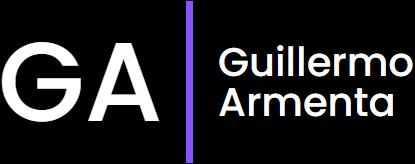Module 3: Go-To-Market
North Star or Vision
Growth Strategy Friday
Workshop #9
Why do some organizations constantly grow while others stay the same or die?
This is nothing new, as when analyzing any country or business ecosystem, its composition is usually very similar, that is:
- 0.1% large companies
- 0.9% medium-sized companies
- 5% small companies
- 95% micro-companies
The big question is: What do the top 0.1% of companies do? In a conference I gave last year at the World Compliance Forum at the United Nations on the use of new technologies, I asked the attendees to raise their hands if their companies had commissioned at least two market research studies. Very few hands went up. However, when I asked those who did raise their hands about their brands, it turned out that most were very large, mostly multinational companies. Here you can find the presentation from the conference I gave at this forum.
Later, I asked two people from the front row who hadn’t raised their hands why their organizations did not hire specialized agencies. They mentioned that their directors viewed it as an expense and preferred to have their marketing analysts handle it instead. I told them: “There you have the answer to why you’re not growing at the same pace. Large organizations invest in hiring the best talent, both internal and external, the best agencies, the best consultants, the best technologies, and the best practices. What characterizes a large organization is having a clear long-term vision and seeking all available resources to generate new competitive advantages. This is not just for their current business but also to explore new businesses and technologies to manage risk. The COVID-19 pandemic made it very clear that no one is secure; any organization can disappear within weeks.”
In this session, we set out to design the North Star (vision) that allows us to adjust the short, medium, and long-term business growth plan. This week’s questions to enhance our medium-term strategy are: Can all our collaborators describe the company’s objective for 2025? Do we have a 10-year long-term growth plan?

Defining this North Star for a brand allows for better management of an organization or business. Have you noticed that companies like Danone, L’Oréal, and other major players publish their sustainability plans up to 2050? Isn’t that surprising? Most governments don’t even have plans for the next 10 years and yet are tasked with regulating industries and technologies. Doesn’t this seem crucial for our organizations?
When we define the North Star with our leaders, it allows us to have growth plans for 3, 5, 10, and as I mentioned, even 30 years, with specific actions, strategic milestones, and staying true to the mission or future.
Download methodology and case studies deck
- I explain in this training how to do it.
Next Friday we will continue with Module 3: Go-To-Market, where we will delve into developing a clear and powerful Brand Purpose by extracting the soul of our brands with one of the most interesting methodologies created by the Soul Institute.
The “Growth Strategy Fridays” are online workshops lasting 2 hours each week, from 12:00 to 14:00 Chicago/CDMX time. These sessions cover corporate growth strategy through a program that reviews methodologies and Harvard cases of the most iconic brands in the world. In each module, I introduce executives from these brands with whom I have collaborated, allowing participants to ask questions directly and network with them.
